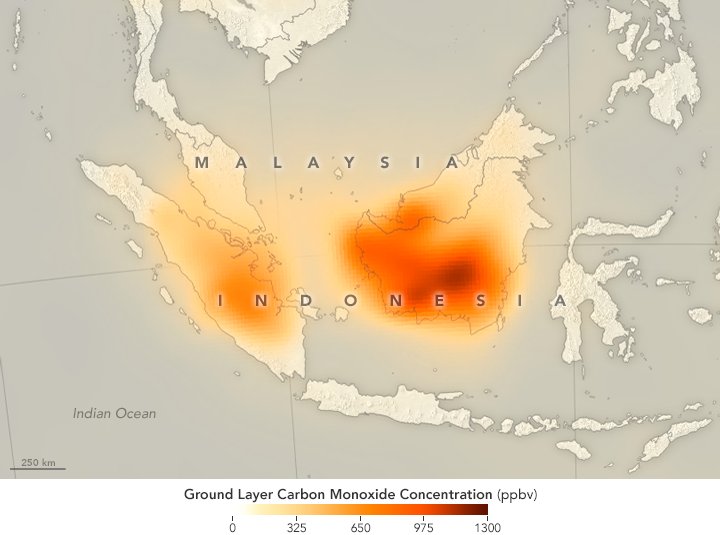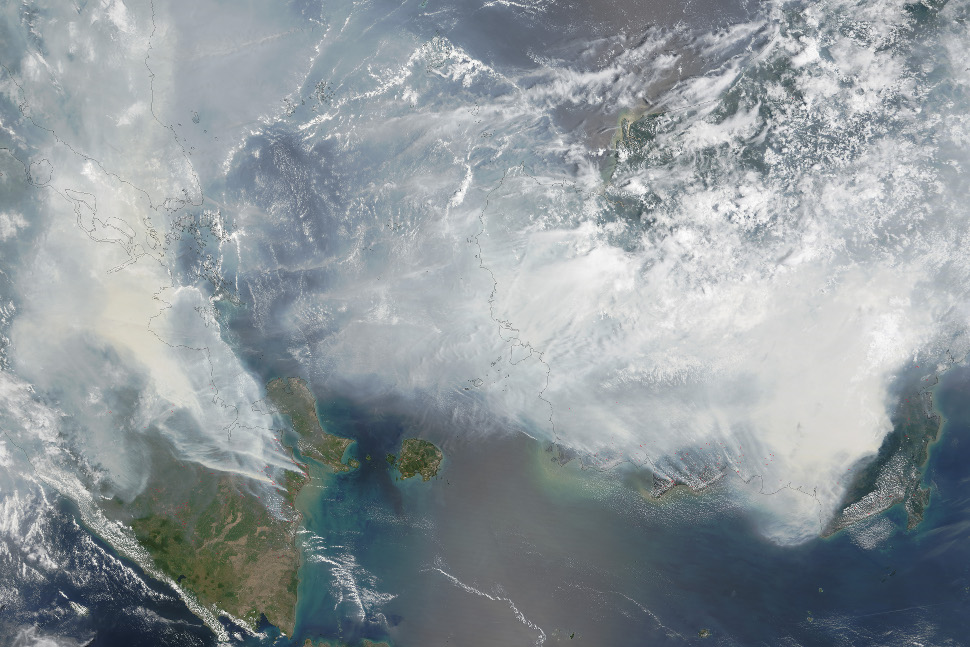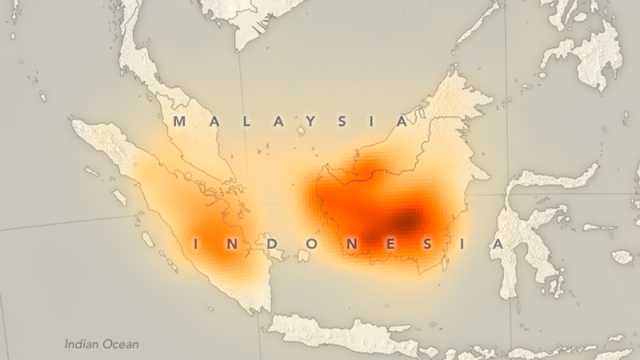Tens of thousands of wildfires ravaged Indonesia in September and October. A sizable portion of these blazes were smouldering subterranean peat fires, which sent toxic gas and particulate matter into the atmosphere. This new map shows the extensive spread of one particularly nasty gas: carbon monoxide.
Wildfires in Indonesia are particularly troublesome. Unlike “conventional” forest fires, these fires smolder under the surface, making it extremely difficult to extinguish; it usually takes a good downpour during the rainy season to put them out. Making matters worse, these peat-fuelled fires release far more smoke and air pollution than most other types of wildfires.
Sadly, the problem is only getting worse as farmers engage in “slash and burn” agriculture, in which fire is used to clear land for farming and to burn away leftover crop debris. Scientists also warn that Indonesia is at risk from these fires because of El Nino.

The data for this CO map was acquired from 1-13 September 2015.
Scientists closely monitored the fires from September to October 2015. The image above was made possible by the Measurement of Pollution in the Troposphere (MOPITT) sensor on the Terra satellite, which can detect carbon monoxide, an otherwise odourless, colorless, but poisonous gas.
“The 2015 Indonesian fires produced some of the highest concentrations of carbon monoxide that we have ever seen with MOPITT,” noted Helen Worden, a scientist at the National Center for Atmospheric Research, in a NASA Earth Observatory article.

Smoke from the fires as seen from space on 24 September 2015. (NASA image by Adam Voiland (NASA Earth Observatory) and Jeff Schmaltz (LANCE MODIS Rapid Response))
Typically, carbon monoxide concentrations over Indonesia are at about 100 parts per billion. During the fire season, however, some parts of Borneo reached levels approaching 1300 parts per billion.
Carbon monoxide is considered a trace gas in the atmosphere, and is one of six major pollutants regulated in the United States and other parts of the world. While it does not have a direct effect on global temperature, it does play a major role in atmospheric chemistry. As NASA notes, “it affects the ability of the atmosphere to cleanse itself of many other polluting gases”, and in combination with other forms of pollution and sunlight, “it also takes part in the formation of lower-atmospheric (“bad”) ozone and urban smog”.
[ NASA Earth Observatory (2) (3) ]
